Everything You Need To Know About Spam
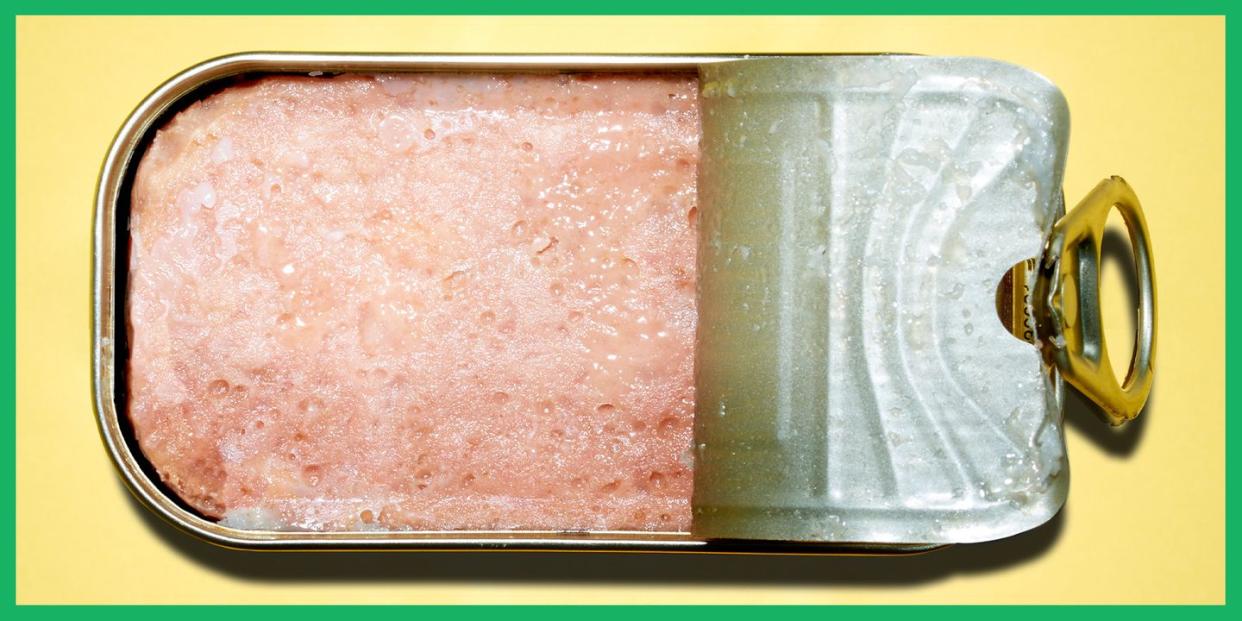
"Hearst Magazines and Yahoo may earn commission or revenue on some items through the links below."
Even if you've never tried it, you can probably instantly recognize Spam by the iconic blue label on its can. After all, it's been around since 1937, and its six ingredients—pork, water, salt, potato starch, sugar, and sodium nitrate—has only changed once (potato starch was added in 2009). Maybe you're curious about what to do with Spam after you buy a can. We talked to Kiki Aranita, chef and lover of Spam, to find out exactly what it is and how to cook with it.
Jump to:
What Is Spam?
Origins Of Spam
What Does Spam Stand For?
What Does Spam Taste Like?
How To Cook With Spam
Where To Buy Spam
Storage
Spam Recipes
What Is Spam?
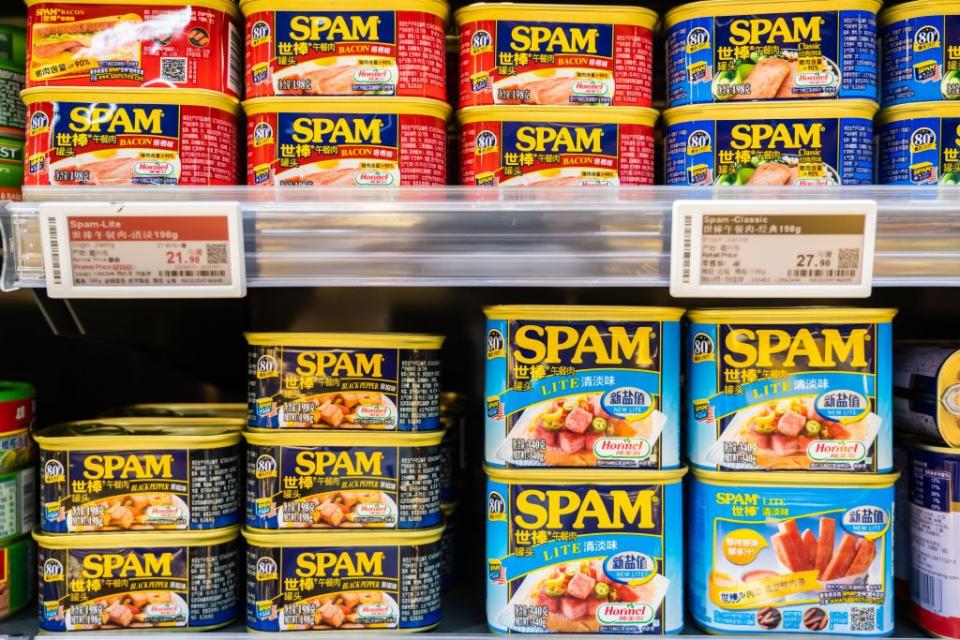
"It's a processed pork shoulder-derived product that originates in Minnesota, but has been adopted by Hawai'i and other Asian and Pacific Island populations primarily due to the American military presence in those places," Aranita said. "It's well-loved and delicious and could survive pretty much any natural disaster, but of course, it comes with a complex, difficult history."
Origins Of Spam
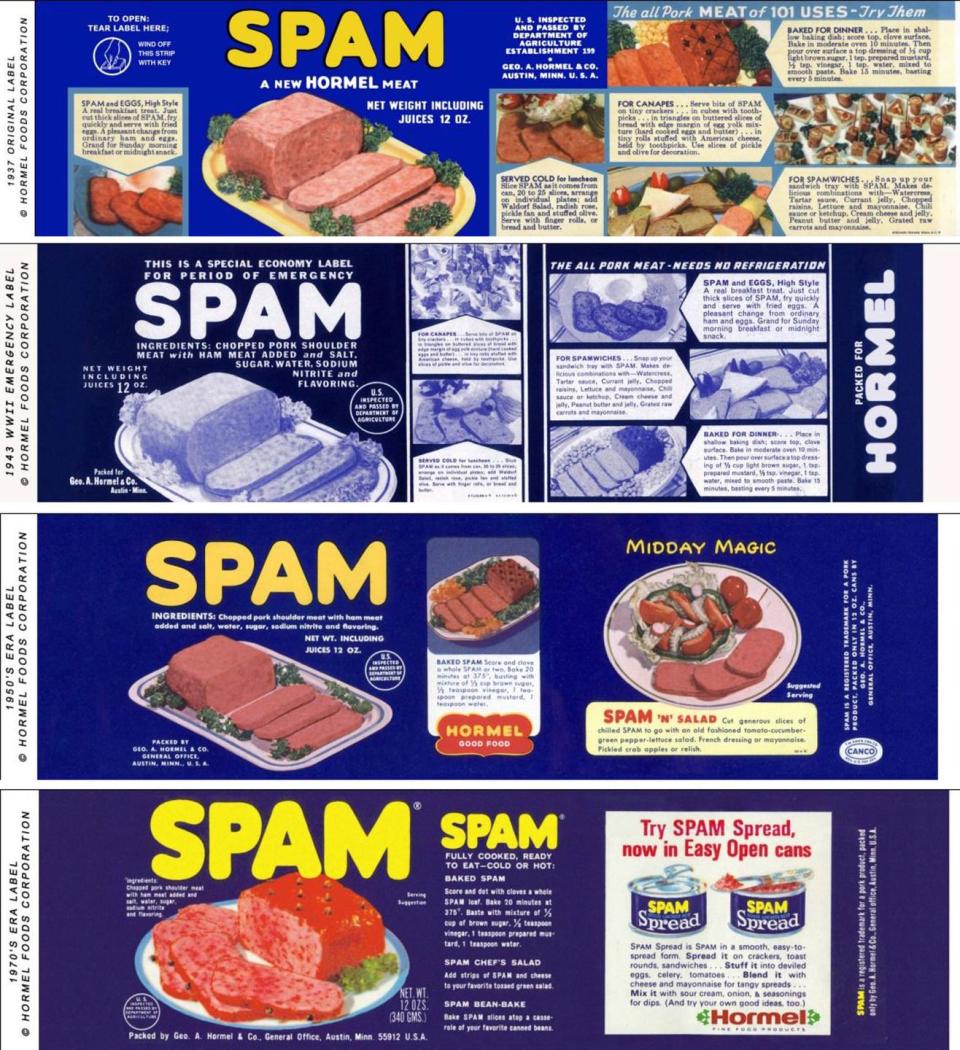
According to Hormel Foods, the makers of Spam, the canned lunch meat came out toward the end of the Great Depression. It was inexpensive and accessible to the masses. Spam could be stored for a long time, and this helped its continued popularity into the World War II era.
During this time, the U.S. sent millions of pounds of Spam to troops stationed in the Asian-Pacific, as the meat could last the trip. This is when the popularity of Spam in those regions really grew, but during WWII and after, Spam became a necessity for locals to survive.
In the time that followed the war, the popularity of Spam decreased in the U.S. and Britain. A stereotype developed that it's a food for poor people, which led to sketches like this one from Monty Python that further enforced the "mystery meat" connotation.
Today, though, Spam is on the rise. In 2020, Hormel Foods reported a sixth consecutive year of record sales growth for Spam, and chefs like Ester Choi, Aranita, and so many others are fighting the stigma. There's even an entire festival in Hawai'i dedicated to it called Spam Jam.
What Does Spam Stand For?
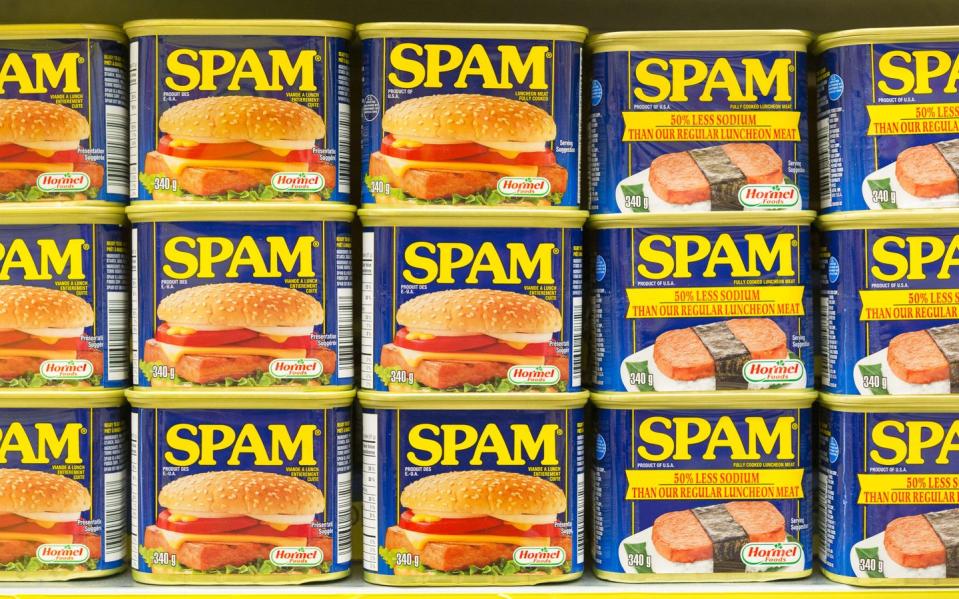
This is unclear. Eater reports that the word Spam is a combination of the words spice and ham. Other people say it stands for "shoulder of pork and ham." And others claim it's an acronym for Special Processed American Meat.
What Does Spam Taste Like?
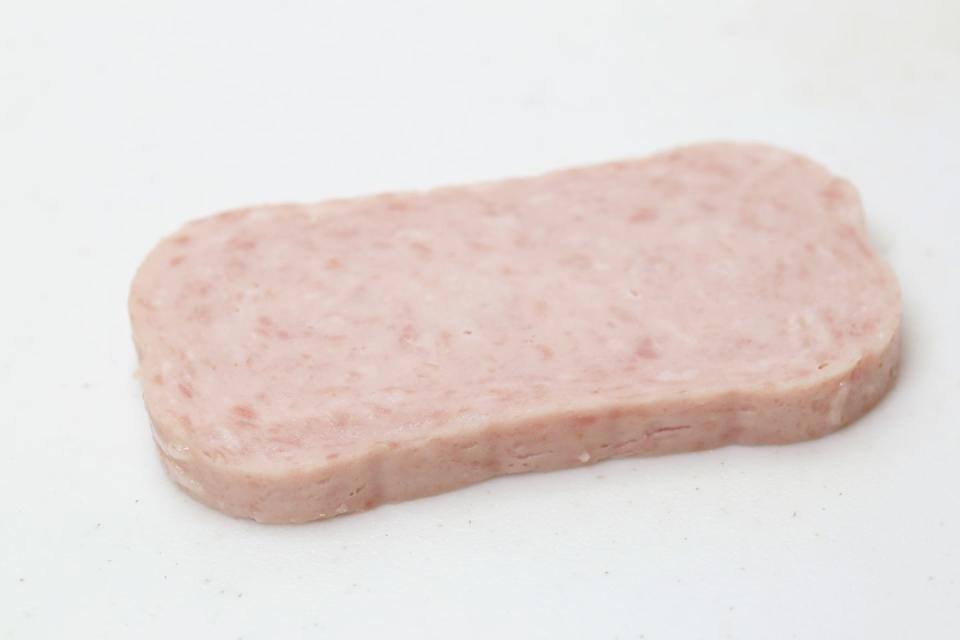
Spam is truly delicious. It's salty and a little spicy with a flavor most similar to ham and a texture close to bologna.
How To Cook With Spam
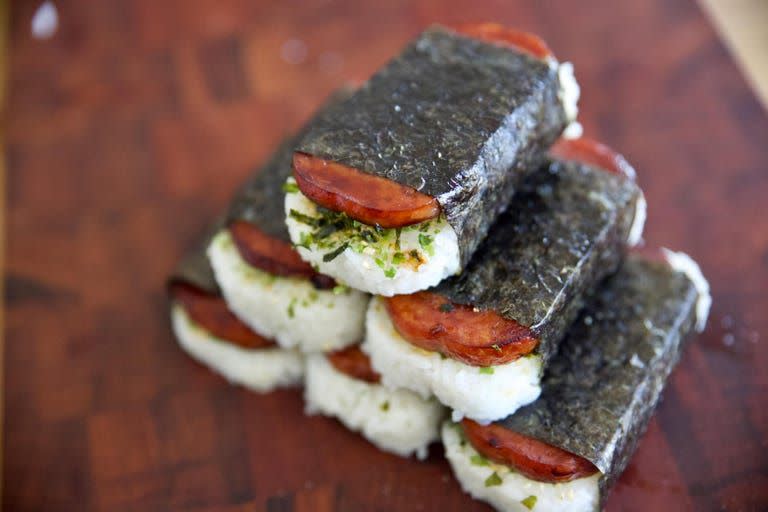
One common way to prepare Spam is taking it out of the can, slicing it thick, and searing it. From there, you can use it like any meat—add it to a taco, stir-fry, or wrapped in seaweed and dipped in a sweet soy sauce, a.k.a. Spam Masubi.
Aranita's favorite way to have Spam is with eggs and rice covered in furikake and chili peppah water (a condiment made of hot peppers, salt, and water you can buy from Aranita's company Poi Dog). "Marinate the Spam in some shoyu and sugar, then sear it," she said. "Scramble some eggs. Douse everything in CPW [chili peppah water]."
Where To Buy Spam
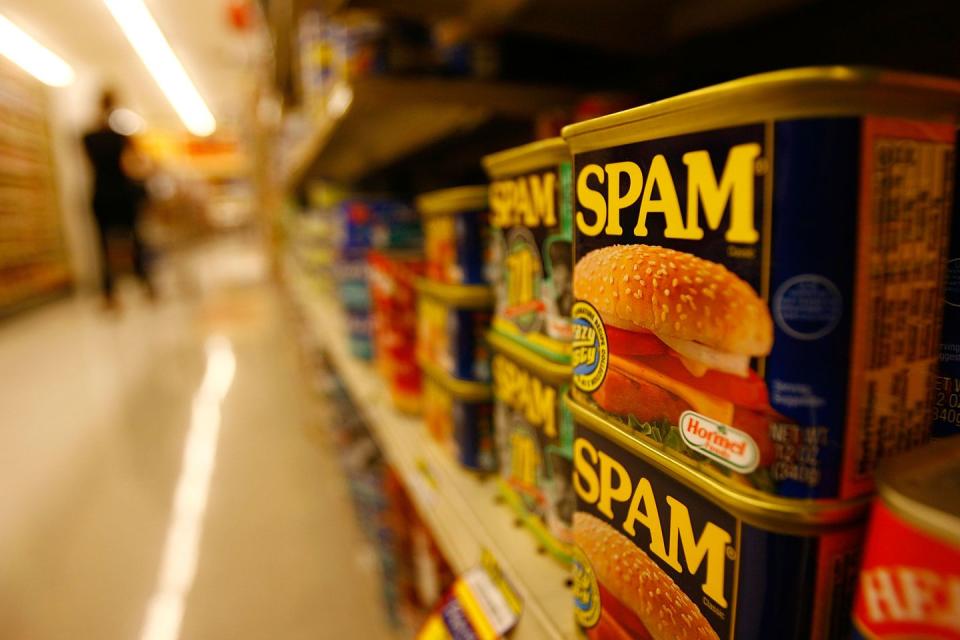
Spam is easy to find. Almost all grocery stores will carry it, and because it's shelf-stable, it can easily be bought online and shipped.
Storage
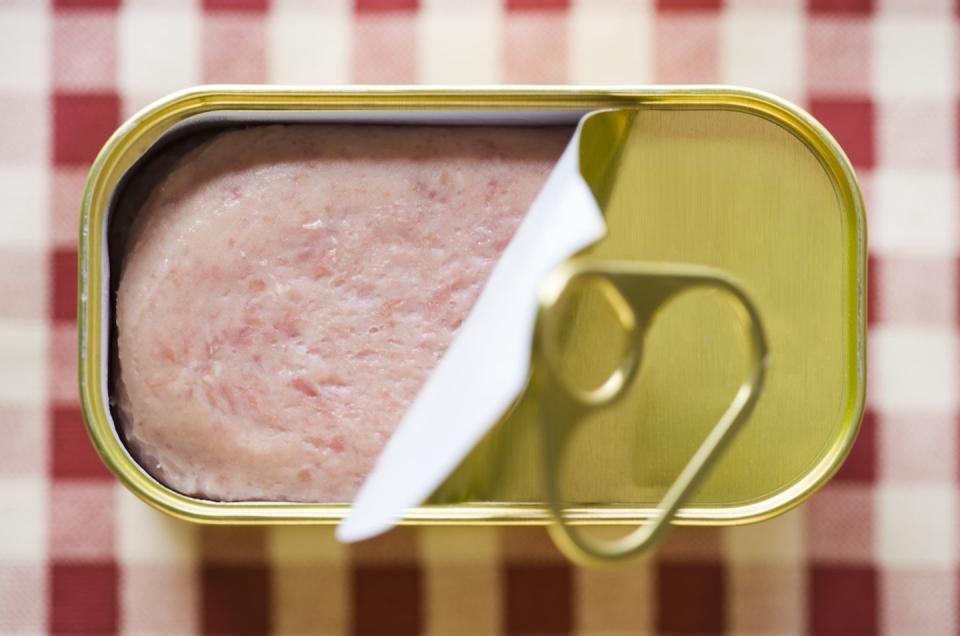
Spam lasts for a long time. It typically has a "best by" date marked three years after it was made, so you don't have to worry about spoilage too much. To get the most out of your can, store in a cool dry place.
Spam Recipes
You Might Also Like

